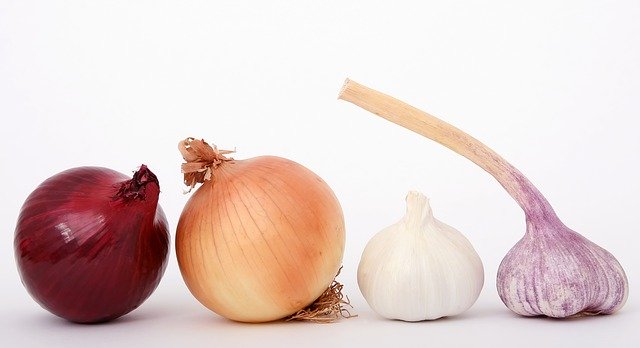For anyone interested in health, concern with inflammation is at the very top of the list. Inflammation is the underlying issue behind almost every disease that kills us or makes us suffer in our modern society. Throughout history infection was the biggest concern. Plagues and infections like tuberculosis, small pox, typhoid fever, and so on were the chief causes of death until the last hundred years. Improved sanitation and disease awareness has vastly decreased the concern that some infectious disease will get us when we least expect it. Nope, now a days mysterious sources of inflammation promote disease states in us that cause the majority of our grief.
I have written many articles on things that cause inflammation with the basic advice to simply eliminate these things from your life. Some of those things are easy to do without like plug-in air fresheners and toxic cleaning products and personal care products. Other inflammation causing things are harder to eliminate, like sugar, flour, and seed oils. Turning down those fresh chocolate chip cookies, that hot slice of pizza, or even that Thousand Island dressing on the otherwise healthy salad, are serious challenges. Yet it is food that has the biggest and most direct impact on our inflammation levels. That means it is food that causes our arthritis, asthma, cancer, diabetes, Alzheimer’s, heart disease, strokes, autoimmune diseases, hormonal imbalances, and so on.
To fight this battle we have turned to powerful inflammation fighting nutrients in the form of supplements. I have cabinets full of them. My morning breakfast smoothie has several dollars worth of specialized nutrients in it on top of the various pills I take. All these expensive and specialized nutrients are derived from specific foods and herbs. Most likely much of the value of these nutrients is wasted because my body does not need those specific inflammation fighters every day. Why is that? It’s because our bodies create hundreds of different inflammatory chemicals for hundreds of different reasons. Knowing just what we need to balance our system in each moment is beyond us. We have to trust that our body knows what to do and when to it. It just needs our overall diet to be balanced, and not overloaded with inflammatory foods.
Toward that end I recently came across a useful website called inflammationfactor.com. Its author, Monica Reinagel, has gone to a ton of work to determine the average amount of inflammation or anti-inflammation each food will create in the average person. She gives 2400 foods a specific rating for a specific amount of each of these foods. The idea is to guide your food choices so that the total average of all the foods you have in a given meal totals up to a net anti-inflammatory score. There is even a cell phone app to help you do this.
How she comes up with her ratings is complex, because foods are complex. Fortunately we don’t need to know any of this behind the scenes stuff. Her system has limitations as it is based on averages and does not take into account the effects of food sensitivities, concerns like lectins, or the impact of pesticides, processing, or food chemicals. But it is still useful to give you an idea about what to eat to promote an inflammation fighting lifestyle.
Now here is the budget saving part of the whole story. By looking over her food ratings we can see which foods have the highest general inflammation fighting capacity for the least money. Here are some of the top inflammation fighting foods that also cost the least:
Onions & garlic
Sweet potatoes
Kale
Mustard, collard, dandelion, & turnip greens
Pineapple
Avocados
Cabbage, Chinese cabbage, & bok choy
Red & yellow peppers (but avoid because of lectins)
Cauliflower, Broccoli, & Brussels sprouts
Carrots
Spinach & leafy green lettuces
Celery
As you can see, vegetables dominate the list of inexpensive anti-inflammatory foods. There are many foods with higher ratings, but which also cost quite a bit more. For example good wild caught sockeye salmon, white tuna, and pickled herring have much higher values because of their high omega 3 content. But for cost savings lets look at that a little closer. A 3-ounce serving of any of these fish will cost $2 -$3 and contain between ½ to ¾ of a gram of omega 3 oils. The concentrated fish oil I sell in the office has 3.5 grams per serving for only about $1 per serving. To get this from eating fish will cost you at least $14, so buying the highly concentrated fish oil is a much better budget buy.
Blame my upbringing, but getting good value for dollars spent is important to me. Many supplements fall into this category. It’s cheaper than trying to get them from food sources. But there are lots of vital elements in organic soil-raised foods that still are not available in most supplements (except for Standard Process products, which are concentrated foods grown this way).
On the other end of the spectrum, the ratings list shows which foods are the most inflammatory. There are no surprises here, with sugar, flour, pasta, cereals, chips, sodas, potatoes, grains, legumes/beans, and dairy topping the list of evil inflammation causing foods. What was surprising was that most fruits are rated inflammation causing because of the sugar in them and eggs also rated bad because of the kind of fat in them.
I plan to combine this information with the lectin avoiding diet information to create a truly anti-inflammatory diet for myself. I will probably still spend silly amounts of money on supplements to achieve specific health goals, but this inflammation rating system is another really helpful tool in my quest to keep my body running happily.
